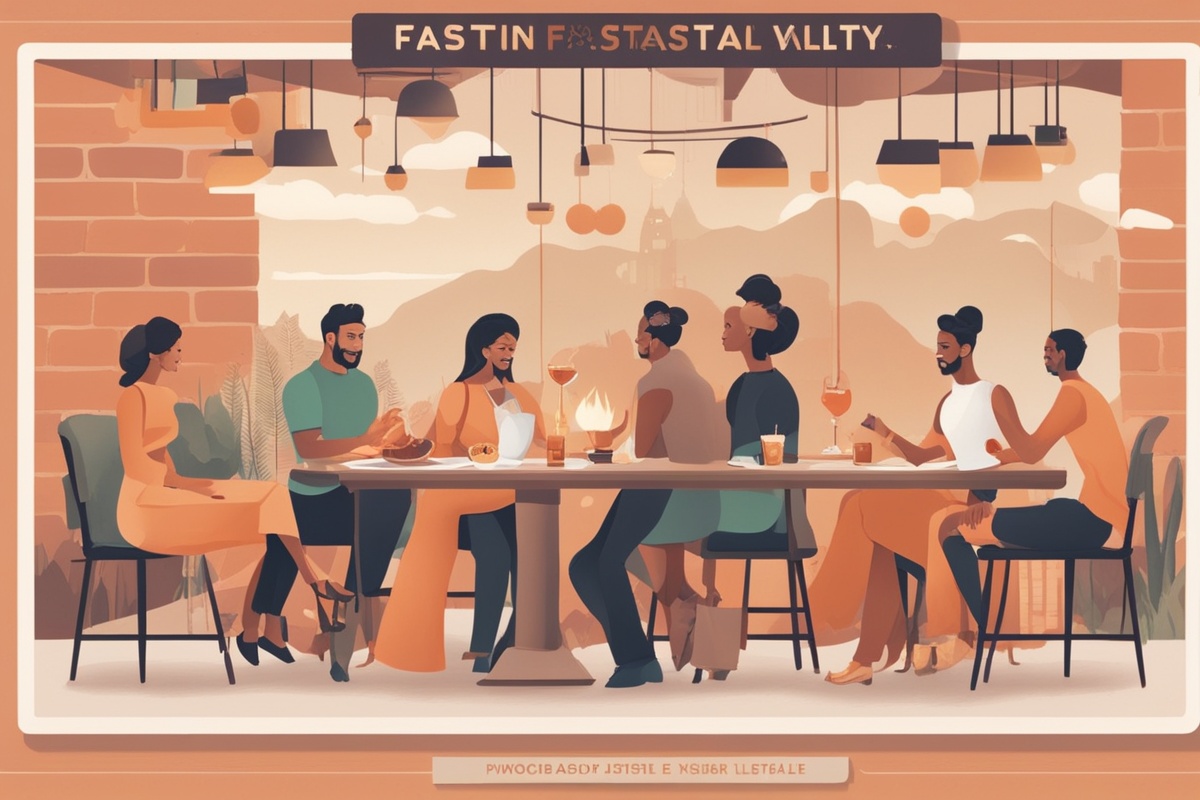Hey there, fasting enthusiasts! If you’ve ever embarked on a fasting journey, whether it’s intermittent fasting, extended fasting, or a religious fast, you’ve probably faced the big question: how do I keep up with my social life while sticking to my fasting goals? Balancing a fasting lifestyle with social engagements can feel like walking a tightrope. Dinner invitations, coffee meetups, and family gatherings often revolve around food, making it tricky to stay committed. But don’t worry—I’m here to share a detailed fasting guide that’ll help you navigate social situations without derailing your health goals. In this post, we’ll dive into practical strategies, scientific insights, and real-life tips to harmonize fasting and social life. Let’s get started!
Understanding Fasting and Its Social Challenges
Fasting, at its core, is the voluntary abstinence from food and sometimes drink for a specific period. It’s practiced for health benefits, spiritual reasons, or weight management. Research shows that intermittent fasting can improve metabolic health and support weight loss (Patterson & Sears, 2017). However, the social aspect of fasting often gets overlooked. Meals are a universal bonding activity, and declining food can sometimes feel like declining connection. Whether it’s explaining your fasting schedule to friends or resisting temptation at a party, the challenges are real. This fasting guide aims to address those hurdles with actionable solutions, so you don’t have to choose between your health and your relationships.
Planning Ahead: Your Secret Weapon for Social Fasting
One of the best ways to balance fasting and social life is to plan ahead. Knowing your fasting window—whether it’s a 16:8 intermittent fasting plan or a 24-hour fast—gives you a roadmap to work with. Check your calendar for upcoming events and align your eating windows accordingly if possible. For instance, if you know there’s a dinner party, you might shift your eating window to include that time. Planning also means communicating with friends or hosts about your fasting routine. A simple, “Hey, I’m following a fasting plan, so I might not eat, but I’m excited to hang out!” can set expectations and avoid awkward moments. This proactive approach is a cornerstone of any effective fasting guide for social success.
Another tip is to keep non-caloric drinks like water, black coffee, or herbal tea handy during social events. Studies suggest that staying hydrated can help manage hunger cues during fasting periods (Vij & Joshi, 2014). Sipping on a drink also gives you something to do with your hands, making you feel less out of place at gatherings where everyone’s eating.
Navigating Social Events While Fasting
Here are a few quick tips to help you stay on track at social gatherings:
- Arrive with a full stomach if your eating window allows it, so you’re less tempted to snack.
- Volunteer to help with non-food tasks like setting up or cleaning, keeping you busy and away from the buffet.
- Bring a fasting-friendly drink or snack (if your fast allows it) to avoid feeling left out.
- Practice polite ways to decline food, like, “I’m good for now, but thanks for offering!”
Explaining Fasting to Friends and Family
One of the trickiest parts of fasting in a social setting is explaining it to others. Some people might not understand why you’re skipping meals and could even take it personally. Transparency is key here. Share why fasting matters to you—whether it’s for health, energy, or spiritual growth. Back up your reasoning with facts; for example, fasting has been linked to improved insulin sensitivity and reduced inflammation (Longo & Mattson, 2014). When people see that your choice is intentional and informed, they’re more likely to respect it.
If you’re worried about pushback, keep your explanation light and personal. You don’t need to launch into a full fasting guide lecture. A simple, “I feel better when I eat at certain times, so I’m sticking to that for now,” often does the trick. Over time, as friends and family see your commitment, they’ll likely become your biggest cheerleaders.
The Psychological and Emotional Side of Social Fasting
Here are some ways to manage the emotional aspects of fasting around others:
- Remind yourself of your “why”—whether it’s better health or mental clarity—to stay motivated.
- Journal your feelings if social fasting feels tough; it can help you process emotions.
- Seek out like-minded individuals who understand fasting benefits and challenges.
- Celebrate small wins, like successfully navigating a food-heavy event without breaking your fast.
Long-Term Strategies for Fasting and Social Harmony
Fasting doesn’t have to be a short-term experiment—it can be a sustainable lifestyle if you integrate it with your social world. Over time, create new traditions that don’t revolve around food. Suggest activities like hiking, board game nights, or movie marathons instead of dinner meetups. Also, be flexible with your fasting rules when needed. Rigid adherence can lead to stress, which may counteract fasting’s benefits, such as reduced cortisol levels (Cahill, 2006). The ultimate goal of this fasting guide is to help you find a rhythm that supports both your health and your happiness.
Another long-term tip is to educate yourself continuously on fasting benefits and fasting tips. The more you know, the more confident you’ll feel in social settings. Share resources with curious friends or family to spark meaningful conversations rather than debates. Fasting can even become a bonding topic if approached with openness and curiosity!
As we wrap up this fasting guide, remember that fasting and social life don’t have to be at odds. With a bit of planning, communication, and emotional resilience, you can enjoy the benefits of fasting while still cherishing time with loved ones. It’s all about finding balance—honoring your health goals without sacrificing connection. So, next time you’re invited to a food-centric event, don’t stress. Use these fasting tips to navigate it with confidence, knowing you’re not alone in this journey. Keep experimenting, stay consistent, and most importantly, enjoy the process. Here’s to your health and happiness!
References
- Cahill, G. F. (2006). Fuel metabolism in starvation. Annual Review of Nutrition, 26, 1-22. https://doi.org/10.1146/annurev.nutr.26.061505.111258
- Christakis, N. A., & Fowler, J. H. (2007). The spread of obesity in a large social network over 32 years. New England Journal of Medicine, 357(4), 370-379. https://doi.org/10.1056/NEJMsa066082
- Cell Metabolism, 19(2), 181-192. https://doi.org/10.1016/j.cmet.2013.12.008
- Patterson, R. E., & Sears, D. D. (2017). Metabolic effects of intermittent fasting. Annual Review of Nutrition, 37, 371-393. https://doi.org/10.1146/annurev-nutr-071816-064634
- Tinsley, G. M., & La Bounty, P. M. (2015). Effects of intermittent fasting on body composition and clinical health markers in humans. Nutrition Reviews, 73(10), 661-674. https://doi.org/10.1093/nutrit/nuv041
- Vij, V. A., & Joshi, A. S. (2014). Effect of water intake on hunger and satiety. Indian Journal of Physiology and Pharmacology, 58(3), 243-247.






